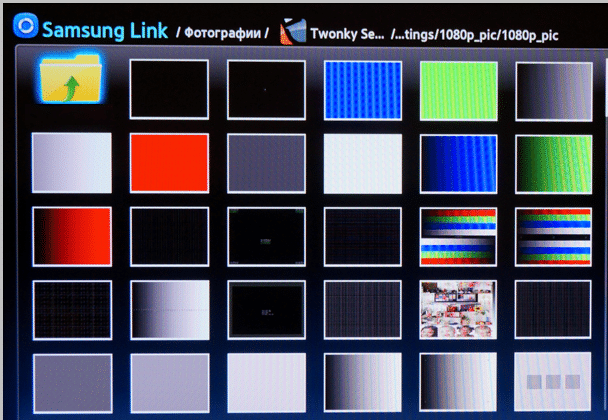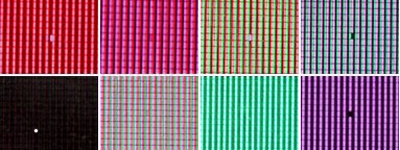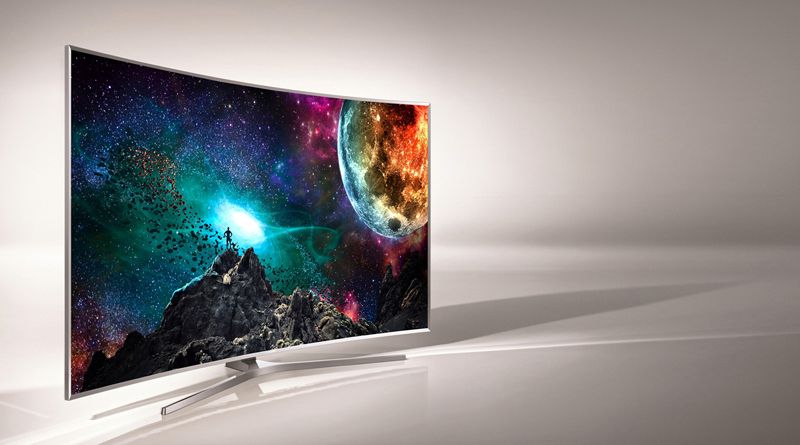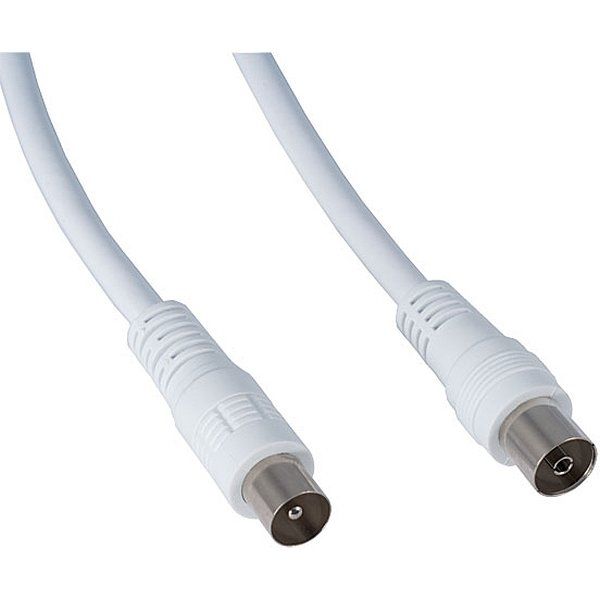What does a dead pixel look like on a TV?
The problem of dead pixels is currently widespread among buyers of TVs and computers, it is one of the most common, so it is especially important to notice it at the selection stage, and if this opportunity is missed, take measures to “cure” the equipment.
The content of the article
Is it possible to notice a dead pixel?
 There are special test images to check the screen for dead pixels; they are completely filled with some color, so the slightest difference will immediately be evident.
There are special test images to check the screen for dead pixels; they are completely filled with some color, so the slightest difference will immediately be evident.
Therefore, we recommend downloading this onto any convenient medium and asking the seller to test the TV or monitor before purchasing. However, keep in mind that not every store will agree to this; the refusal may be justified by the danger of transferring a virus from your device. In this case, only you can decide whether to take risks or not.
IMPORTANT! There are standards according to which a certain number of dead pixels is the norm for a particular equipment, therefore such cases are not classified as defective and are not subject to return or repair under warranty. Therefore, we advise you to approach checking this parameter with special care.
What does a dead pixel look like on a modern TV?
There are three types of this defect:
- white dot on a black background;
- black on white;
- a subpixel problem that gives a pixel a single, unchanging color.
 First, you need to understand the principle by which undeformed pixels work. Each of them consists of three subpixels of red, green and blue, their combinations with each other form a huge number of colors and shades. The degree of expression of each of these three is regulated by a transistor that distributes a certain amount of electricity to each unit. Thus, any malfunction of the transistor can lead to the appearance of dead pixels. This may be due to the following reasons:
First, you need to understand the principle by which undeformed pixels work. Each of them consists of three subpixels of red, green and blue, their combinations with each other form a huge number of colors and shades. The degree of expression of each of these three is regulated by a transistor that distributes a certain amount of electricity to each unit. Thus, any malfunction of the transistor can lead to the appearance of dead pixels. This may be due to the following reasons:
- overheating or hypothermia, leading to hardening of one or another subpixel;
- increased humidity, which usually results in white pixels;
- power outages that can lead to transistor defects;
- violation of manufacturing technology;
- long-term use of the screen to display a static picture, increasing the risk of transistor burnout. This is why most TVs display a dynamic screensaver by default if the video has been paused for a long time;
- any mechanical damage.
Is it possible to get rid of
There are three ways to “cure” the screen from the indicated problem.
 The first of them is physical. Take an ordinary cotton swab and gently press down on the location of the non-working pixel while the TV or monitor is turned off. After a while, turn on the device to check, repeat the procedure if necessary. Using this method, you can “move” a liquid crystal that has been displaced from its place for one reason or another.
The first of them is physical. Take an ordinary cotton swab and gently press down on the location of the non-working pixel while the TV or monitor is turned off. After a while, turn on the device to check, repeat the procedure if necessary. Using this method, you can “move” a liquid crystal that has been displaced from its place for one reason or another.
ATTENTION! It is only suitable for a small accumulation of dead pixels.If the problem has grown from the level of a point to the level of a spot, this method can lead to its growth!
The second method is software. There are specialized utilities (for example, JScreenFix) that work according to the following scheme: they include an animated image consisting of many colors moving at great speed. The program works for half an hour, then you need to repeat the procedure every 4 hours. You may also need to repeat the “course” in the summer, when the problem may reappear due to the heat.
The third way is repair. Problems that lie not in a specific liquid crystal, but in the operation of the transistor, cannot be eliminated on your own, so you will only need the help of a specialist.





